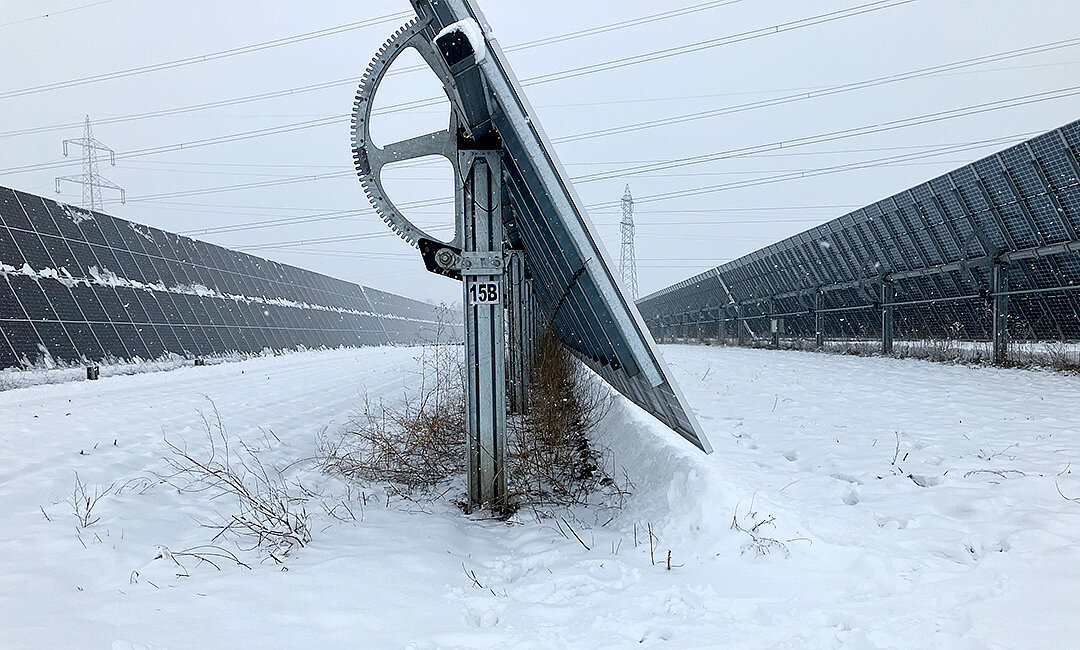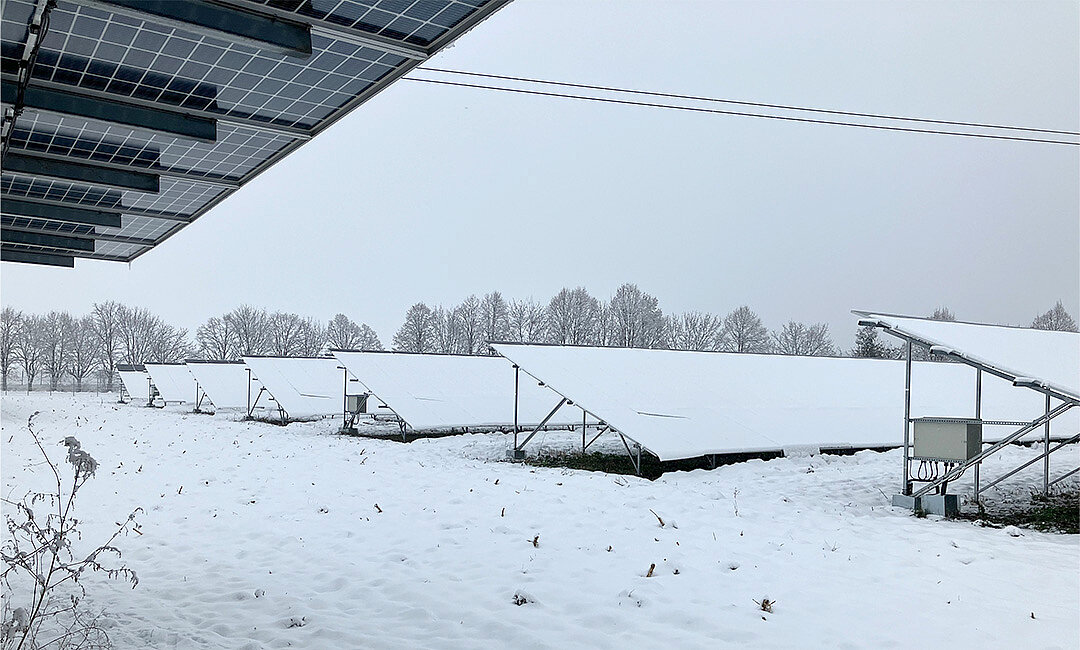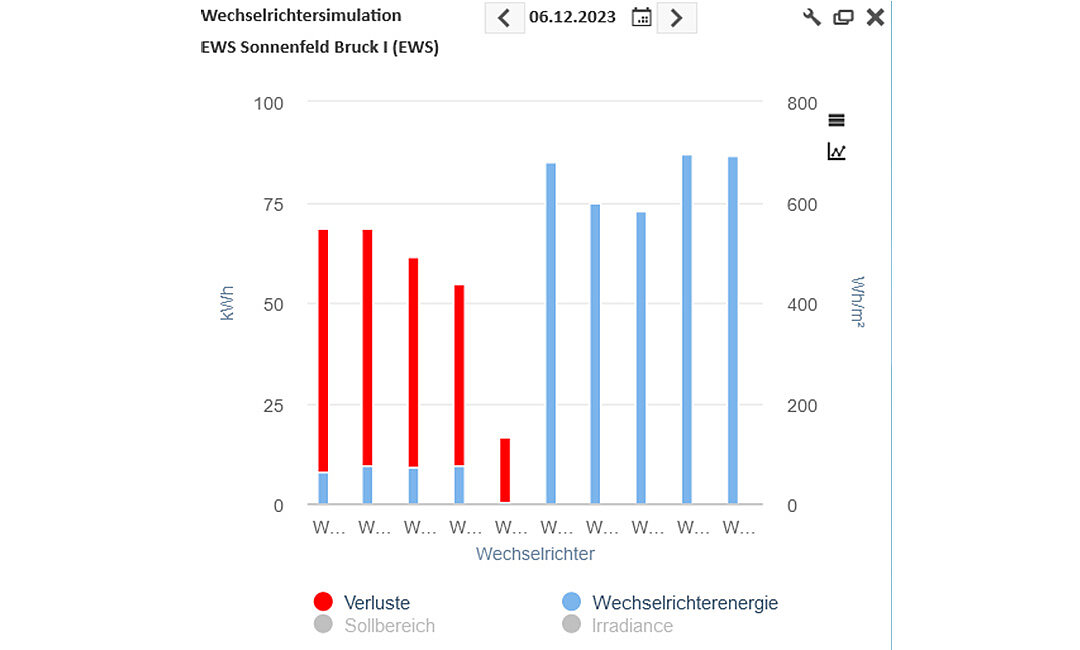
Hauptinhalt
Hauptinhalt
PV yield losses in snow? - Not at EWS Sonnenfeld®
12.12.2023: On sunny winter days, the sun catchers on the EWS Sonnenfeld provide solar power despite the snow.
In winter, when there is less and shorter sunshine anyway, solar power yields are known to be lower. We know that 2/3 of the yields are produced in the summer months. But on sunny winter days, the sun catchers can clearly score points, thanks to the control of the modules.
Compared to fixed PV mounting systems, which cannot produce electricity because the modules are covered in snow, the movable and controllable solar panels on the EWS Sonnenfeld® are ahead. Just as in the case of rain, snowfall is recognised by sensors and the "precipitation mode" is automatically activated. This means that the module tables are swivelled to 70° to the wind direction, the snow can slide off and the panels continue to generate solar power.
Sun catchers have a clear advantage
"Because we use bifacial glass/glass modules on the EWS Sonnenfeld®, solar power is also produced on the backs of the solar panels due to the reflected radiation, which is even greater due to the white snow. This reflected radiation, also known as albedo, is added to the direct solar radiation," says Joachim Payr about another yield-increasing advantage.
At the EWS Sonnenfeld in Bruck an der Leitha, we compare the solar power yields of different mounting systems. In the last few very snowy weeks, further advantages have been shown in practice, but above all that the sun catchers delivered maximum yields while the fixed panels suffered high losses due to snow cover.
Am I ready for hectares of solar power?
Request your free land check now!
An area of at least 5 hectares in size should not be a problem. Will it be suitable for agricultural photovoltaics?
I hope so and will do the "area check"!


